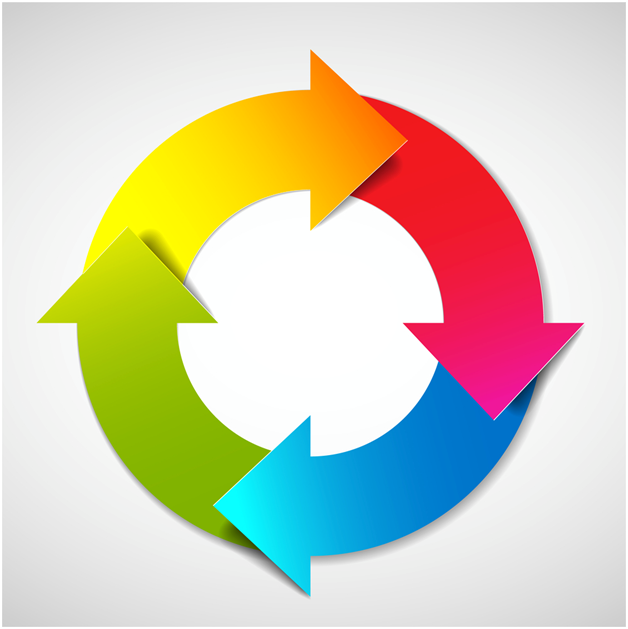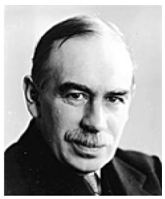Journal of
eISSN: 2376-0060


Conceptual Paper Volume 3 Issue 4
Respiratory Physiologist and Integrative Health Educator, USA
Correspondence: Roger L Price, Respiratory Physiologist and Integrative Health Educator, Breathing Well LLC, 1425 Broad St Suite B, Clifton NJ 07013, USA, Tel ÿ(973) 778-9225
Received: August 15, 2016 | Published: August 17, 2016
Citation: Price RL. STRESS. J Lung Pulm Respir Res. 2016;3(4):124–128. DOI: 10.15406/jlprr.2016.03.00094
Stress is directly involved in the symptom-treatment disease paradigm
“If stress was addressed 10% of the time it was talked about, it would not be the problem that it is today.”
Just because something exists doesn’t mean that it should exist, nor should it have the impact on the lives of the hundreds of millions of people, that it does.
Just because something is commonplace doesn’t mean it is normal or natural. Tens of millions of people suffer from so many ‘things’ that they have been led to believe are ‘normal’. The result of this is that they believe that the only option is for them to be treated and medicated by ‘the system’, be it drug, machine or surgery. Here is a partial list of very common ailments. Not one is normal or natural:
Inability to breast feed after birth. Attention deficit
Colic and allergies Chronic tiredness
Poor sleeping patterns Stress
Bedwetting Sleep apnea
Asthma Head, neck and jaw pain
Eczema High blood pressure
Snoring Digestive disorders
I could go on and on, basically listing all the ailments that you find “cures” for in popular magazines, on Television advertising as well as on Pharmacy shelves.
We will only ever ‘catch’ one of four conditions in our lives.
Viruses
Bacteria
Parasites
Fungal infections
Almost everything else is created as a consequence of what we are doing. And - most of what we are doing is driven by stress of one type or another.
It is no secret that very few true “Health Systems” exist - they are rather very professionally run, extremely wealthy and profitable “Disease Management Businesses” and, like all businesses, are bottom-line focused. All businesses want more customers and want to sell them more products - and the Business of Medicine is no exception.
As a trained pharmacist of the 1960s, I have spent more than 50years watching the pharmaceutical industry develop. Cynicism aside, and not wanting to be accused of supporting a ‘conspiracy theory’, what I see is a system which all but guarantees a never-ending supply of eager - even almost willing people - to try the latest offerings. The advertising is very seductive to say the least.
There is a reason for this, and it has become an epidemic of a largely Western style disease called ‘Average Health’. Without anyone deliberately doing anything, the way we live, eat, sleep and respond, and the nature of the Western health model of symptom diagnosis and largely medicated treatment, we are caught up in a cycle of living which:

Creates Stress
Promotes Stress
Diagnoses Stress
Uses medication to treat Stress
This ‘vicious circle’ will continue unless we are able to interrupt this cycle using non-medicated means.
Well - what better solution to the problem of Stress than to take a clear, uncluttered and scientific look at the three most important aspects of this global epidemic.
What better place to start than to really simplify how all this stuff works. It is so easy to get caught up in the big Latin words and descriptions and to have our minds bent out of shape with rows and rows of chemical formulae which so very few people really understand. So let’s make it simple.
For the world to function efficiently it has to be in balance
So do we - and nature has provided us with some incredible systems to allow this to happen. Mess with these systems and chaos follows.
Obviously we have to be able to react, move, run, hunt and protect ourselves. This uses a part of the nervous system called the Sympathetic - and that primes us for action. If we didn’t relax and recover after that action, we would burn out - so the other half of the nervous system is called the ParaSympathetic - and that allows us to get back into balance.
Obviously, if we spend too much time in Sympathetic and not enough time in Parasympathetic, we are going to burn out, get tired, sick, suffer injuries etc. so we have a monitoring sensor in the brain which is designed to control how much time we spend in each phase.
The ideal resting balance is for us to be in Sympathetic around 40% and in Parasympathetic for 60% of the time - and if we do that we will be well. Our bodies are designed to follow this pattern.
What few people understand and remember is that when you Inhale - you drive Sympathetic and when you Exhale you activate Parasympathetic - so our breathing should be based on a shorter inhale and longer exhale. Just think about this for a moment.
When you’re stressed and bothered you often sigh - and doesn’t that feel good? Well, that sigh is extending the Exhale and keeping you in recovery a little longer than usual - so you feel better.
Obviously it is a lot more complex than this and involves nerves muscles, hormones, feedback loops, signaling pathways etc. - but why complicate things unnecessarily?
The sad fact is that the majority of the Western World has their breathing back to front, whilst those who follow Eastern cultures usually do it the right way. Think of any martial art, yoga, guided meditation or whatever else is embraced - it is all about the breath.
The Yogic philosophy is that life is not about days, months or years - it is about the number of breaths in our body - and that when we use up the last one is when we depart. So they’re pretty good at math - and worked out that if they breathe slowly, they will live longer. And they do, and they are healthier, and they don’t get cancer, heart attacks and suffer the other ‘modern diseases’ anywhere near the degree that we experience in the West.
Think about this for a moment.
The prime focus of the brain, the mind and the body is on ‘taking the next breath’!

Is that not reason enough to closely examine what it is that allows for balanced functional breathing, but more importantly, what causes breathing to become dysfunctional?
So what is the link between Breathing and Stress? It is too simple - the only thing that changes your Breathing is Stress. But we do have to look a little deeper than this one-liner, and the rest of this article is going to focus more closely on what actually happens in this stress-breathing relationship.
It is not the situations that are stressful - it is our responses that are stressed.
It is not the situations that are stressful - it is our responses that are stressed.
Why is it important to do something about it?
How can this be done?
So let’s look at the three stages above in a little more detail and you will see that it is quite simple to make changes. All you have to do is do something differently from the way you usually respond.
See? It is simple. Please remember - I didn’t say it was easy - just simple. The hard part is to make the decision to change your approach, and that is something that only you are able to do. It is not up to anyone else to change you. That is your job.
Now there are a few simple things that you can do to make this all easier.
Facts and figures
Now is probably a good time to look at the facts and figures surrounding stress - in daily life as well as in the workplace and see the impact that it has on our lives and the lives of those around us.
CONDITION |
STRESS LINK & CONSEQUENCE |
REF |
TREATMENT |
AGEING |
Shorten telomeres memory impaired Shrinks hippocampus |
6 |
Medication Supplementation |
BLOOD PRESSURE |
Vasoconstriction Tachycardia |
7 |
Medication |
BONE STRENGTH |
Lower bone density Reduced calcium uptake |
8 |
Medication |
BRAIN FUNCTION AND ANXIETY |
Amygdala size and activity increase Hippocampus reduces in size |
9 |
Medication |
CHOLESTEROL/TRIGLYCERIDES |
Increase LDL Lower Trig clearance |
10 |
Medication |
DIGESTION |
Reduction in blood supply Gut spasm, Enzyme reduction |
11 |
Medication |
HAIR LOSS AND COLOR LOSS |
Hair growth stops or slows down Melanocytes change composition |
12 |
Medication |
HEART DISEASE |
Hypertension, cholesterol & obesity |
13 |
Medication - Surgery |
IMMUNE SYSTEM |
Cortisol dominance ANS imbalance |
14 |
Medication |
MOOD AND DEPRESSION |
Disturbance in blood and brain chemistry |
15 |
Medication |
MUSCLE HEALTH AND RECOVERY |
Energy drawn from protein Muscle breakdown |
16 |
Medication |
MUSCLE TENSION |
Stress hormones shorten muscles for Fight/Flight |
17 |
Medication |
SKIN HEALTH |
Distressed breathing reduces oxygen release causes cell death |
18 |
Medication oral as well as topical |
SLEEP |
Cortisol dominance Circadian dysrythmia |
19 |
Medication |
TEETH GRINDING & GUM DISEASE |
Airway dysfunction causes bruxism pH change to saliva causes gingivitis |
20/21 |
CPAP, Oral appliance Periodontal therapy |
WEIGHT GAIN |
More fuel produced - less used Increased blood sugar levels |
22 |
Medication Gut surgery |
Table 1 THESE ARE NOT JUST STATISTICS - THEY ARE YOUR PATIENTS AND CLIENTS 5
Optimal health is not optional health
We have a duty to those who place their health in our hands.
There are three quotes which I feel are very applicable to this discussion - and they appear below.

EINSTEIN
Insanity is repeating the same behavior and expecting a different result.

VOLTAIRE
The art of medicine is keeping the patient entertained while nature cures the disease.

KEYNES
It is better for the reputation to fail conventionally than to succeed unconventionally.
None.
The author declares no conflict of interest.

©2016 Price. This is an open access article distributed under the terms of the, which permits unrestricted use, distribution, and build upon your work non-commercially.
 November is Lung Cancer Awareness Month, a vital opportunity for us to raise awareness about the dangers of lung cancer. Let’s unite to educate ourselves and others, and inspire proactive steps toward lung health. This year the motto of this event is “Stronger Together: United for Lung Cancer Awareness”. So for this occasion, the Journal of Lung, Pulmonary & Respiratory Research invites articles that emphasize the significance of lung protection. All the submissions received in the month of November will be offered with 40% discount on publication.
November is Lung Cancer Awareness Month, a vital opportunity for us to raise awareness about the dangers of lung cancer. Let’s unite to educate ourselves and others, and inspire proactive steps toward lung health. This year the motto of this event is “Stronger Together: United for Lung Cancer Awareness”. So for this occasion, the Journal of Lung, Pulmonary & Respiratory Research invites articles that emphasize the significance of lung protection. All the submissions received in the month of November will be offered with 40% discount on publication.